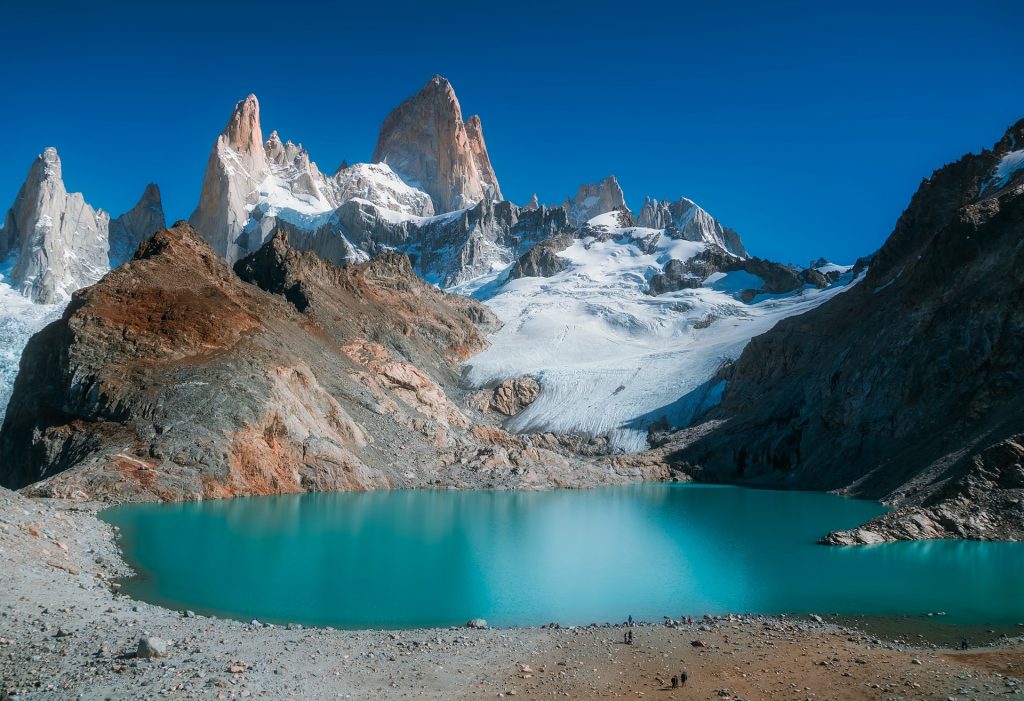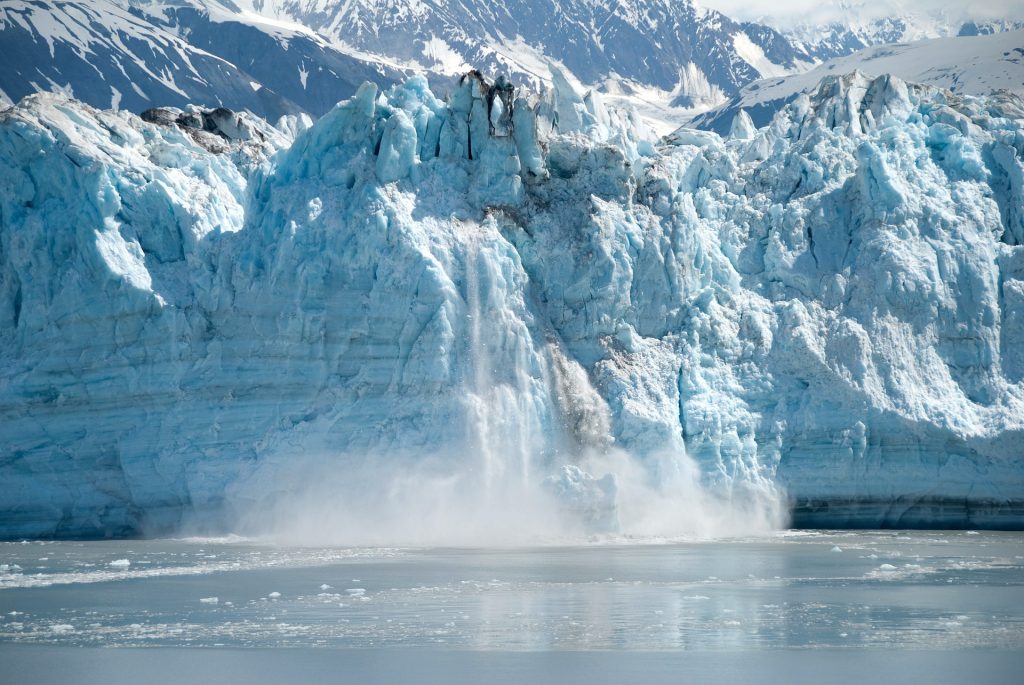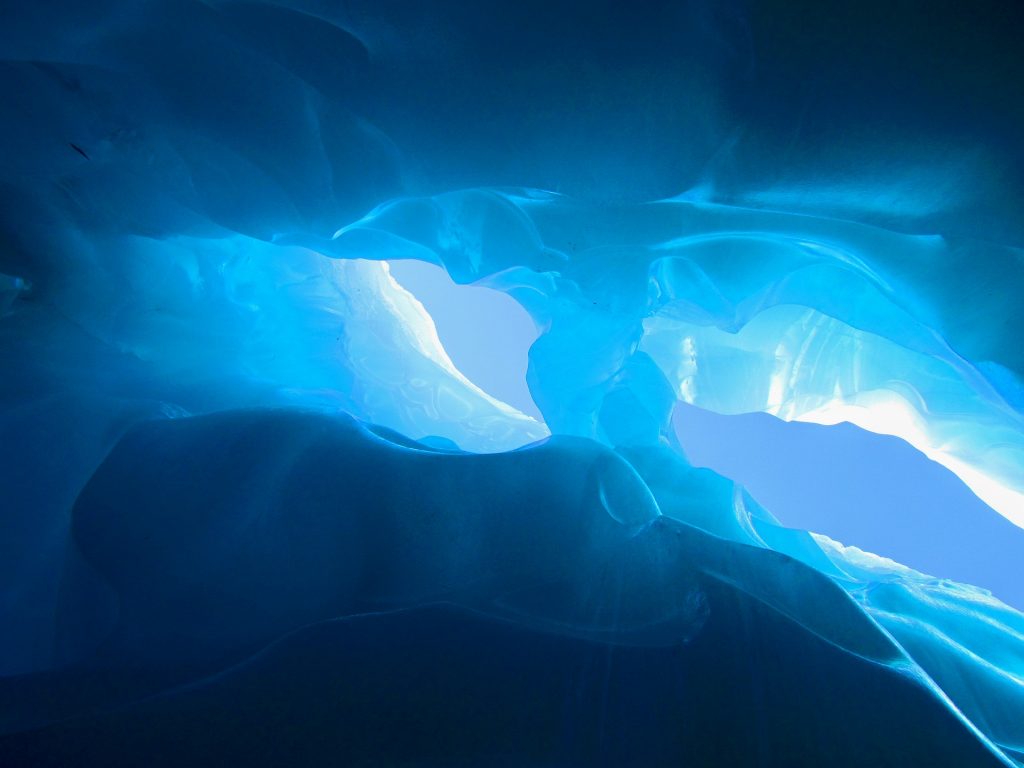Introduction
A glacier is a body of ice on land that may look exceptionally beautiful and simple, but it has a very complex formation process. Depending on the type of glacier and its location, glaciers may move down mountain slopes and can sculpt any adjacent landmass including cliffs, hills, and peaks causing deep valleys and jagged ridges. Thankfully not all glaciers are active and mobile. Currently, some active valley glaciers can be seen in the Alps, Scandinavian mountains, the Himalayas, Alaska ranges, and in the Andes Mountains in South America. A globally famous piece of jagged landscape can be found in the Southern Alps in New Zealand, which was the result of a powerful erosive glacier.
However, the more common glaciers are known as the continental glaciers, also referred to as ice caps or ice sheets. These massive structures of glacial ice often cover enormous landmasses and may erode deeply into the ground or bedrock. In Greenland and the Antarctic, continental glaciers that are miles thick have been found to compress the land surface below sea level in many locations. On the other hand, if all the glacial ice in the Antarctic were to melt, it would lead to significant flooding and loss of many islands.

Is a glacier the same as an Iceberg?
Many people think that a glacier is the same as an iceberg. In fact, there are subtle differences between the two. A glacier is a more permanent body of ice on land, while an iceberg is a temporary body of ice in the water. In the majority of cases, an iceberg occurs when a large chunk of ice breaks off a glacier. Generally, icebergs are much smaller than glaciers.

Where are glaciers found?
The majority of glaciers are found near the North and South poles, but they also exist in many other geographical areas, even Africa. Glaciers have also been found in New Zealand and parts of the Southern Pacific islands. In order to form glaciers, one needs very specific conditions in the climate. First, the area must have a significant amount of snowfall regularly, especially during winter. The temperature in the summer must be cool in order to prevent all the snow accumulated during winter from melting away. These environmental conditions are typically seen in the high alpine and polar areas of the globe.
Even though glaciers are massive in size, they have the ability to be active (move), albeit slowly. The size and depth of glaciers also vary; some may be the size of a soccer field and be a few hundred meters deep, but more commonly glaciers can be hundreds of miles long and several miles deep. Today, glaciers occupy about 10% of the global total landmass, mostly in Greenland, Antarctica and the Arctic. Glaciers reflect what the earth once looked like during the Ice Age-era when ice covered nearly one-third of the landmass and one-third of the oceans. It is believed that many glaciers are remnants of the Ice Age and have been slowly retreating (melting) over the centuries. The glaciers in Glacier National Park were formed during the mini ice age ending in the mid-1800s.

How do glaciers form?
It takes a significant amount of snow accumulation over a long period of time before a glacier can form. Some of this accumulated snow does not melt away in the summer as a result of year-round cooler temperatures.
During the formation of a glacier, accumulating snow turns to ice and begins to flow both downwards and outwards from the pressure of the overlying snow. In areas with regular snowfall, and cooler summer temperatures, not all the snow will melt away. Then, the following winter, more snow will fall and compress the snow from previous years. This results in a denser and more compact layer known as firn. Each snow season, the firn is compressed leading to the eventual formation of the thick and dense mass of ice- known as glacial ice.
Again, large amounts of snow accumulation is necessary for glacial ice formation. Specifically, more snow must accumulate during the winter than what melts away during the summer. As the snow accumulates, the snow lying underneath becomes highly compressed causing the snowflakes to develop round shapes, which are quite different from the hexagonal shapes of fresh snow. With time, the densely buried snow becomes even more compact and most of the trapped air in between the grains of the crystalline snow is expelled. This type of granular snow called firn usually takes a minimum of 24 months to form. As more snow accumulates, this exerts significant pressure on the already buried layer of firn, which may have started to melt. However, the persistent cold results in recrystallization of the melted firn, resulting in the formation of glacial ice – a type of metamorphic rock. This formation of glacial ice can take decades or many centuries, depending on the amount of snowfall and other environmental conditions.

What is an active glacier?
Once a glacier has formed, it may sometimes become active or mobile. The reason for the mobility is that the compressed ice crystals deform or change shape (become plasticized) under their own weight. This deformation of ice crystal is most obvious at depths below 50 meters. Over time the enormous weight of the glacier also causes the ice at the base to melt. In addition, the heat from the earth’s surface may also contribute to ice melting. The combination of ice melting and deformity (plasticity) leads to a condition known as basal sliding. Depending on the slope, the glacier may move laterally or go downwards. The melted ice acts as a slippery surface allowing the glacier to slide relatively easily over sediments, hills, and bedrock.
If the ice melting is severe enough due to drastic temperature changes, the glacier may suddenly start to advance rapidly. It is believed that such a ‘galloping’ glacier was responsible for generating the iceberg that eventually sank the Titanic in 1912. As more glacial ice forms, the glacier will eventually grow big enough and become relatively immobile. Conversely, if more ice melts than that which forms, the glacier will become mobile.

How has climate change affected glaciers?
Despite certain evidence that glacial ice is melting, which could have potentially serious consequences for surrounding land masses, historical records indicate cooler temperatures have resulted in larger glaciers within the last twenty years, at least here in Glacier National Park.

